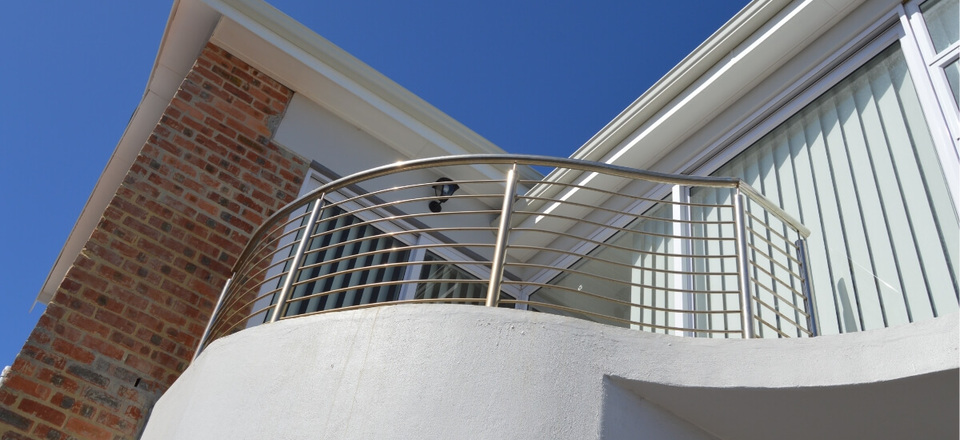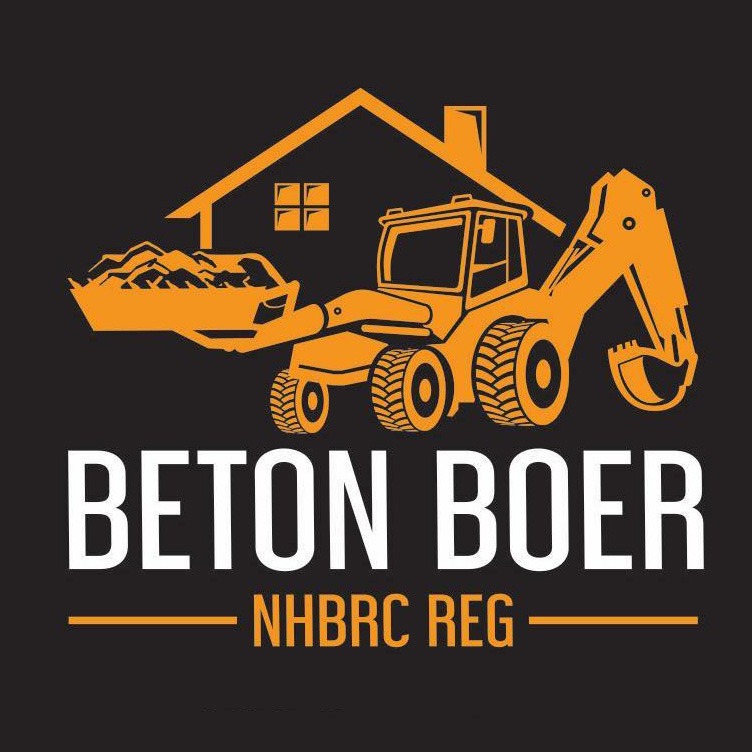4 Types of Balustrades for Your Home
You’re installing balustrade hardware for their safety feature, right? But nowadays you can find various designs that are aesthetically appealing, enhancing your home’s staircase or balcony while keeping everyone safe too! Railings no longer need to be boring and you can pick from different types that’ll instantly revamp your home interior or exterior space.
While balustrades need to comply with building safety standards, you’re not limited in the types available for revamping your home stairwell, deck or balcony. Will it be aluminium, glass or stainless steel? Keep reading before picking the right balustrade for your home!
1. Frameless Glass Balustrades
For the modern or minimalist home, you can’t go wrong with frameless glass balustrades. What’s more, they add a touch of elegance, creating the appearance of luxury and style, effortlessly. But, they’re functional too, keeping your staircase or balcony safe for users while letting in more light. Made with glass panels, these balustrades also allow for uninterrupted views.
Acting as a safety barrier, the glass comes in different strength levels meeting stringent building standards stipulated in most countries. South African safety standards for glass balustrades as well as other types of banisters need to comply with SANS guidelines when installing this hardware in buildings.
Toughened safety glass is a popular choice for balustrades, offering seven times more strength than the normal type. Some manufacturers will use Cast in Place (CIP) laminated glass because of its resistance to shattering. Whichever type of glass you use, you can expect durability, safety and aesthetics when picking this balustrade style for your home.
When deciding if this is the right type of balustrade for your home take into consideration the following factors:
• Maintenance and cleaning: Glass balustrades require minimal maintenance and are easy to clean with soap, warm water and a cloth. This type of banister doesn’t require any sanding, painting or treatment to protect against wear and tear, pests, mould or mildew.
• Cool to the touch: For some homeowners, this may be a disadvantage if they prefer a warmer texture. Glass can also make a room look and feel sterile and cold.
• Translucent or opaque: Whether you go opaque or clear, you can create a contemporary look with either option when installing glass balustrades on your balcony or stairwell.
• Customisable: Different dimensions allow you to select the glass panel size you want for your deck or staircase railing. You can also opt for the framed style if you prefer that look to the frameless option.
Frameless glass balustrades can be more expensive than other types of railings and you’re limited in colours too. But, for the modern homeowner, the disadvantages could be minimal when compared to the pros of installing glass balustrades!
2. Aluminium Balustrades
Aluminium balustrades don’t only look sophisticated, sleek and modern but they also don’t rust! This type of balustrade is low maintenance and is ideal for decks and balconies as well as indoor staircases. They can be customizable to fit in with your home architecture and you can even select your preferred powder-coated colour while protecting the balustrade from environmental exposure.
Other benefits of selecting this type of balustrade include:
• Fire resistant: Aluminium doesn’t burn easily, making it a safe material for balustrades.
• Easy cleaning: There’s no need to use harsh chemicals to clean this type of railing, Simply wipe down with soapy water and a cloth!
• Durable: Aluminium doesn’t rot, splinter or crack. It’s resistant to mould and mildew and doesn’t fade, making this type of balustrade an excellent choice for exterior stairwells, decks and balconies.
• Eco-friendly: Offering a long lifespan, aluminium balustrades don’t need to be replaced often but when you do decide to change them, they’re recyclable too!
There are some disadvantages to picking this type of banister:
• Limited designs: Aluminium railings come in limited styles being mostly chosen for their practicality than aesthetic appeal!
• Prone to scratches: While highly durable, this type of railing can easily scratch depending on the coating used.
Similar to other types of balustrades, aluminium railings must comply with safety standards and regulations. In South Africa, this means measuring at least one metre from the finished floor and being able to withstand loads and impact as per SANS regulations.
Aluminium balustrades can be designed with either vertical tubes or slats. They’re often picked for their clean lines and smooth finish. They’re easy to install as a DIY project with preassembled kits and you have the options of different shapes too, from oval to round, square or rectangular.
3. Stainless Steel Balustrades
stainless-steel balustrades are one of the most popular choices for residential properties. The material itself has a number of benefits including:
• Durable: stainless steel is strong and durable, making it one of the best materials for keeping people safe when used in handrails. It has a high tensile strength, handling considerable pressure applied to it.
• Resistant to weathering: This type of balustrade can be used outdoors as it can handle extreme weathering conditions. No matter how bright the sunlight or heavy a hail storm, you can rest assured your stainless-steel balustrade is safe!
• Rust resistant: You don’t have to stress about damp or wet conditions rusting your stainless-steel balustrade, indoors or outside. This material is resistant to rusting.
• Easy cleaning: Homeowners love the fact that cleaning these balustrades is as easy as 1-2-3! Simply wipe down with a damp cloth to get rid of dirt, grease or grime. Or, use a clean cloth to get back the shine.
• Minimal maintenance: Stainless balustrades don’t warp, splinter or break easily so very little maintenance is required to keep them in good nick.
• Longevity: Because stainless steel is durable, resistant to weathering and rust, and don’t easily get damaged, you can rely on this type of balustrade being around for a long time.
• Budget friendly: This type of balustrade is one of the more affordable options available for homeowners. With minimal maintenance and a good lifespan, stainless-steel balustrades are cost-effective long-term.
• Attractive: Offering a sleek and elegant appearance, the stainless-steel balustrade works well in contemporary home designs. It’s aesthetically appealing with its clean and smooth lines.
One last benefit worth noting about this type of banister is that you have the option of picking from a variety of designs. This gives you the freedom to match the balustrades with your interior or exterior style without compromising on your home’s overall look.
The Sassda (South African Stainless-Steel Development Association) Guide clearly outlines the use, manufacturing, fabrication and installation of stainless-steel balustrades in homes. Safety standards are detailed in the guide ensuring this type of handrailing keeps users secure.
4. Wooden Balustrades
If you’re looking for a more rustic style for your home’s balcony or stairwell, then wooden balustrades are your solution. This type is most suitable for the traditional home architecture with wooden decks and timber staircases. While the wooden balustrade exudes sophistication and charm, it’s often the costliest option.
One of the most attractive benefits of picking this type of balustrade is the endless shapes and patterns you can create with this railing. Wooden balustrades can be carved or turned or simply left sleek for an understated but elegant style. However, the drawback of this type of balustrade is that it’s prone to moisture and humidity, pest infestation such as termites and water damage.
There are some other disadvantages to installing wooden balustrades:
• High maintenance: This type of balustrade needs to be regularly sanded and varnished to keep them in good condition while ensuring longevity.
• Risk of rotting: If exposed to damp or wet conditions, the wooden balustrade will start to rot if not properly maintained and treated with the right application to protect them.
However, the following benefits could far outweigh the cons of having wooden railings in your home:
• Traditionalism: For the homeowner seeking traditional architecture, you can’t go wrong with this type of balustrade for its natural appeal that hasn’t been artificially manufactured.
• Timber variety: You can select a timber variety that matches the rest of your home décor such as gum, pine or white oak.
• Finish: Wooden balustrades can be varnished or stained, letting the timber’s natural appearance show through or they can be painted in a colour of your choice.
• Strong material: Wood is generally strong depending on the type of timber you pick. This gives your railing durability while still being safe.
Similar to all other types of balustrades, the wooden railing needs to comply with safety standards and this includes being able to withstand any force placed on them, be it human or strong winds. Different safety standards such as height requirements need to be met when installing wooden balustrades on stairs, decks or balconies.
Final Thoughts
Picking the right balustrade hardware for your home can be challenging especially if you’re searching for a particular look. However, there’s a style for every home architecture and it all comes down to aesthetics, safety and functionality. Budget and maintenance are other factors that may influence the balustrade type.
Stainless-steel banisters are perfect for the minimalist home while frameless glass suits the contemporary residence. Aluminium balustrades are practical, sleek and durable. All three types are safe as long as they’ve been manufactured to comply with local building standards. Which one will it be for your home?
Source: https://betonboer.co.za/







.jpg?width=200&height=94)





























